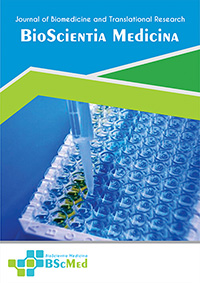Main Article Content
Abstract
Background: Intensity-modulated radiotherapy (IMRT) is the cornerstone of treatment for nasopharyngeal carcinoma (NPC), offering high dose conformity. However, anatomical variations during the multi-week therapy course can compromise dosimetric accuracy. Adaptive radiotherapy (ART), which adjusts the treatment plan based on intra-treatment imaging, aims to mitigate these effects. This meta-analysis synthesized contemporary comparative evidence (2014–2025) on the efficacy and safety of ART versus non-adaptive IMRT in locoregionally advanced NPC.
Methods: Following PRISMA guidelines, PubMed, Embase, Scopus, and Cochrane Library were searched for studies comparing ART with non-adaptive IMRT (cohorts or hybrid/phantom plan comparisons) in locoregionally advanced NPC. Primary outcomes were locoregional recurrence-free survival (LRFS) and overall survival (OS); secondary outcomes included progression-free survival (PFS), distant metastasis-free survival (DMFS), and dosimetric metrics for targets (D98, Conformity Index [CI]) and organs-at-risk (OARs: parotid Dmean, spinal cord Dmax, brainstem Dmax). Hazard Ratios (HR) and Mean Differences (MD) were pooled using random-effects models. Data estimation methods (Tierney, Wan, Cochrane) were employed where necessary. Heterogeneity was assessed using I².
Results: Nine studies (2 cohort, 7 dosimetric/anatomical) involving 362 patients (clinical) and 215 datasets (dosimetric) were included. ART significantly improved LRFS compared to non-adaptive IMRT (pooled HR = 0.53, 95% CI 0.32–0.88; I²=0%). No significant differences were found for OS (HR=0.98, 95% CI 0.64–1.50), PFS (HR=0.70, 95% CI 0.45–1.07), or DMFS (HR=0.88, 95% CI 0.48–1.62). Compared to hybrid/phantom plans, ART significantly enhanced target coverage (pooled PTV D98 MD = 2.15 Gy, 95% CI 1.10–3.20 Gy; I²=78%) and conformity (pooled CI MD = 0.05, 95% CI 0.02–0.08; I²=85%). ART significantly reduced OAR doses: parotid Dmean (pooled MD = -3.50 Gy, 95% CI -4.95 to -2.05 Gy; I²=90%), spinal cord Dmax (pooled MD = -3.95 Gy, 95% CI -5.80 to -2.10 Gy; I²=93%), and brainstem Dmax (pooled MD = -2.75 Gy, 95% CI -4.40 to -1.10 Gy; I²=91%). Dosimetric analyses exhibited high heterogeneity.
Conclusion: ART significantly improves LRFS in locoregionally advanced NPC compared to non-adaptive IMRT. It provides substantial dosimetric advantages, enhancing target coverage and conformity while critically reducing doses to parotid glands, spinal cord, and brainstem. Despite high dosimetric heterogeneity and no demonstrated OS benefit, the improvements in LRFS and dose delivery support the thoughtful implementation of ART.
Keywords
Article Details
As our aim is to disseminate original research article, hence the publishing right is a necessary one. The publishing right is needed in order to reach the agreement between the author and publisher. As the journal is fully open access, the authors will sign an exclusive license agreement.
The authors have the right to:
- Share their article in the same ways permitted to third parties under the relevant user license.
- Retain copyright, patent, trademark and other intellectual property rights including research data.
- Proper attribution and credit for the published work.
For the open access article, the publisher is granted to the following right.
- The non-exclusive right to publish the article and grant right to others.
- For the published article, the publisher applied for the Creative Commons Attribution-NonCommercial-ShareAlike 4.0 International License.





